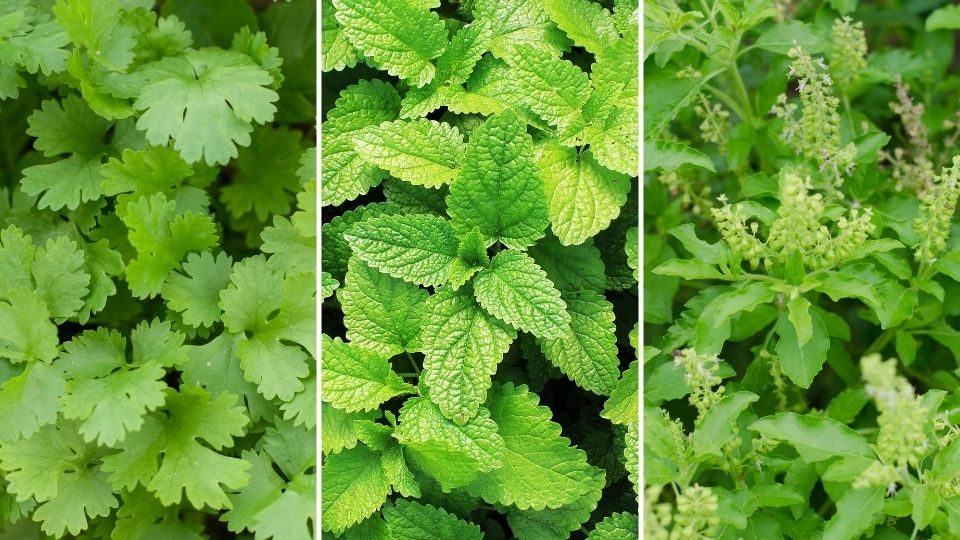Herbs are the best source of health-promoting phytochemicals. They have a healing capacity. Herbs help in the prevention as well as treatment of diseases. Some herbs with potent healing power are easily available. These should be used in the fresh form as part of the food.
Commonly available herbs include coriander, basil, mint, parsley, curry leaves and dill leaves. Besides, fennel green, giloy leaves, hyssop, oregano, moringa and rosemary are also available in some part of the world.
Fresh herbs have strong antioxidant, anticancer, anti-mutagenic, neuroprotective, cardioprotective, renal protective and anti-inflammatory properties. These herbs help to preserve health by protective actions. These herbs also boost immunity.
Key Recommendation
- Variety: Include a variety of fresh herbs in your diet. Choose at least 2 types of different herbs every day.
- Fresh: These herbs should be fresh. Consume within 2-3 days after picking up from the garden or purchasing from the vegetable market.
- Green: Use the green leaves of these herbs as a part of the food.
Recommended Servings
The green leaves of these herbs are a particularly important part of the healing diet. Due to protective and healing benefits, herbs are also an essential part of dietary guidelines.
Standard Serving Size
| Form | 1 Serving Size equal to: |
| Chopped Herbs | 15 grams (approx. 1 ½ handful) |
| Herbs Paste | 15 grams (approx. 1 ½ handful) |
| Green Chutney (without salt) | 15 grams (approx. 1 ½ handful) |
Recommended Servings
| Age Group (In Year) | Minimum Daily Amount | Recommended Daily Amount |
| 1-2 | 1/6 serving (2.5 g) | 1/3 serving (5 g) |
| 2-3 | 1/3 serving (5 g) | ½ serving (7.5 g) |
| 4-8 | ½ serving (7.5 g) | ¾ serving (11.25 g) |
| 9-11 | ¾ serving (11.25 g) | 1 serving (15 g) |
| 12-13 | 1 serving (15 g) | 1 ½ serving (22.5 g) |
| 14-18 | 1 ½ serving (22.5 g) | 2 servings (30 g) |
| 19-70 | 1 ½ serving (22.5 g) | 2 servings (30 g) |
| 70+ | 1 ½ serving (22.5 g) | 2 servings (30 g) |
| Pregnant | 1 ½ serving (22.5 g) | 2 servings (30 g) |
| Lactating | 1 ½ serving (22.5 g) | 2 servings (30 g) |
Fresh Herbs Categories
There are two categories (group) of fresh herbs:
Essential Herbs (Group 1)
Essential herbs include all varieties of basil, coriander, mint, oregano, and thyme.
- Basil (all types).
- African Blue Basil
- Camphor Basil (Kapuri Tulsi) – Ocimum kelimandscharium
- Cardinal Basil
- Cinnamon Basil
- Clove basil or African basil (Ram Tulsi) – Ocimum gratissimum
- Genovese Basil (Italian basil)
- Greek Basil
- Green Ruffles Basil
- Hoary basil (Shweta Tulsi) – Ocimum canum
- Holy Basil (Vishnu Tulsi) – Ocimum sanctum
- Lemon Basil
- Lettuce Basil
- Lime Basil
- Purple Basil
- Spicy Globe Basil
- Summerlong Basil
- Sweet Basil or French Basil (Van Tulsi) – Ocimum bacilicum
- Thai Sweet Basil
- Coriander or Cilantro – Coriandrum sativum.
- Mint (all types)
- Apple mint
- Orange mint
- Peppermint
- Pineapple Mint
- Spearmint
- Oregano (fresh).
- Thyme (fresh).
These herbs are essential. Coriander, basil, and mint should be in your regular diet. You can choose both green herbs from this group if available. If these herbs are unavailable due to season or country, you should use other herbs listed in the recommended group.
Recommended Herbs (Group 2)
- Curry leaves.
- Culantro (long coriander, Mexican coriander) – Eryngium foetidumI.
- Dill leaves.
- Fennel (green).
- Fenugreek leaves.
- Giloy.
- Hyssop.
- Moringa.
- Parsley.
- Rosemary.
- Vietnamese cilantro – Persicaria odorata
Fresh Herbs in Pregnancy
Fresh herbs are also important during pregnancy. Pregnant women should take coriander daily and mint and basil every week.
The half of servings should be from coriander. The remaining half should be from other herbs, including mint, basil, fennel green, parsley, dill leaves, giloy leaves, moringa leaves etc.




